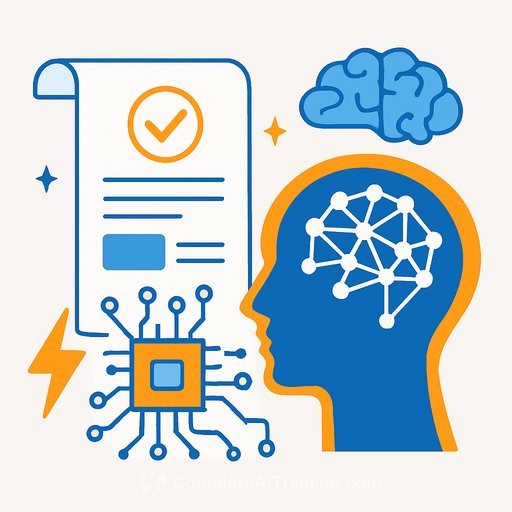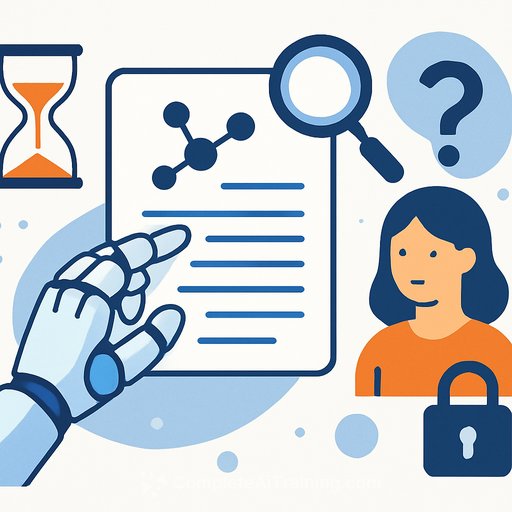AI voice clones now sound human - and most listeners can't tell
New research shows the average listener can no longer reliably distinguish human voices from AI clones of those same voices. The gap has closed not with exotic research tools, but with off-the-shelf software, a few minutes of audio, and minimal cost.
That has direct consequences for authentication, fraud, and information integrity. It also opens productive avenues for accessibility and education - if we build with consent, disclosure, and safety in mind.
The study at a glance
- Dataset: 80 voice samples (40 human, 40 AI). AI set included "from scratch" voices and voice clones trained on real speakers.
- Accuracy: Participants correctly labeled only 62% of human voices as human.
- Misclassification: 58% of cloned voices were judged as human; 41% of from-scratch voices were judged as human.
- Conclusion: There's no meaningful difference in how people judge real voices versus their AI clones.
- Cost/effort: Clones were built with consumer software and as little as four minutes of recorded speech.
As one of the study leads noted, we've been primed by flat, robotic assistants. That bias no longer holds: naturalistic, human-sounding speech is now widely accessible.
For context on ongoing anti-spoofing efforts, see the ASVspoof challenge. For the journal, see PLOS ONE.
Why this matters
Voice is no longer a trustworthy authentication factor on its own. If someone can clone your voice from a short sample, they can pressure family members, mislead colleagues, and defeat voice-only identity checks.
Real incidents show the pattern. A U.S. parent was convinced her daughter was crying on the phone and lost $15,000 to a scam. Criminals cloned the voice of Queensland Premier Steven Miles to push a Bitcoin scheme. With realistic audio, social engineering scales.
Practical steps for scientists, security teams, and research leaders
- Deprecate voice-only authentication. Require multi-factor checks with cryptographic, device, or behavioral signals.
- Add liveness and challenge-response. Use unpredictable prompts, time-bounded responses, and cross-channel verification.
- Instrument your comms. Record provenance where possible; log call metadata; verify high-risk requests via a separate, pre-agreed channel.
- Train staff and participants. Teach how voice cloning works, what to ignore, and how to escalate suspicious requests.
- Stand up red-team exercises. Simulate voice-based social engineering and update controls based on failure points.
- Update consent and data handling. Treat voice as biometric data. Limit public voice samples; gate internal recordings.
- Integrate anti-spoofing in ASV/biometrics. Combine speaker verification with spoof detection and conservative thresholds.
Detection limits - and where to focus research
Human perception is near its ceiling for cloned voices. That shifts value to automated detectors and systemic controls. Expect an arms race: synthesis improves, detectors adapt, and distribution channels evolve.
- Develop detectors that generalize out of distribution: channel noise, accents, compression, and adversarial post-processing.
- Explore multi-modal signals: text-audio alignment, breath timing, micro-prosody, and phase artifacts across codecs.
- Benchmark with public corpora (e.g., ASVspoof) and report calibration curves, not just headline accuracy.
- Study human-in-the-loop triage: when to trust automation, when to escalate, and how to present uncertainty.
What still works for spotting fakes (and where it fails)
- Procedural checks beat "ear tests." Use call-back protocols, passphrases known only to the parties, and multi-factor identity.
- Heuristics (unnatural breaths, odd timing, clipped sibilants) help in edge cases, but high-quality clones often pass casual scrutiny.
- For high-stakes contexts, assume voices are spoofable and design workflows accordingly.
Responsible applications worth building
- Accessibility: personalized voices for people who've lost speech - with explicit consent and clear labeling.
- Education and communication: synthetic narration for scale, with transparent disclosure and provenance metadata.
Bottom line
Voice is now a weak trust signal. Treat it like caller ID: useful, never sufficient. Build systems that expect spoofing, verify across channels, and log provenance. That's how you reduce risk while still using synthetic audio for good work.
Your membership also unlocks:






